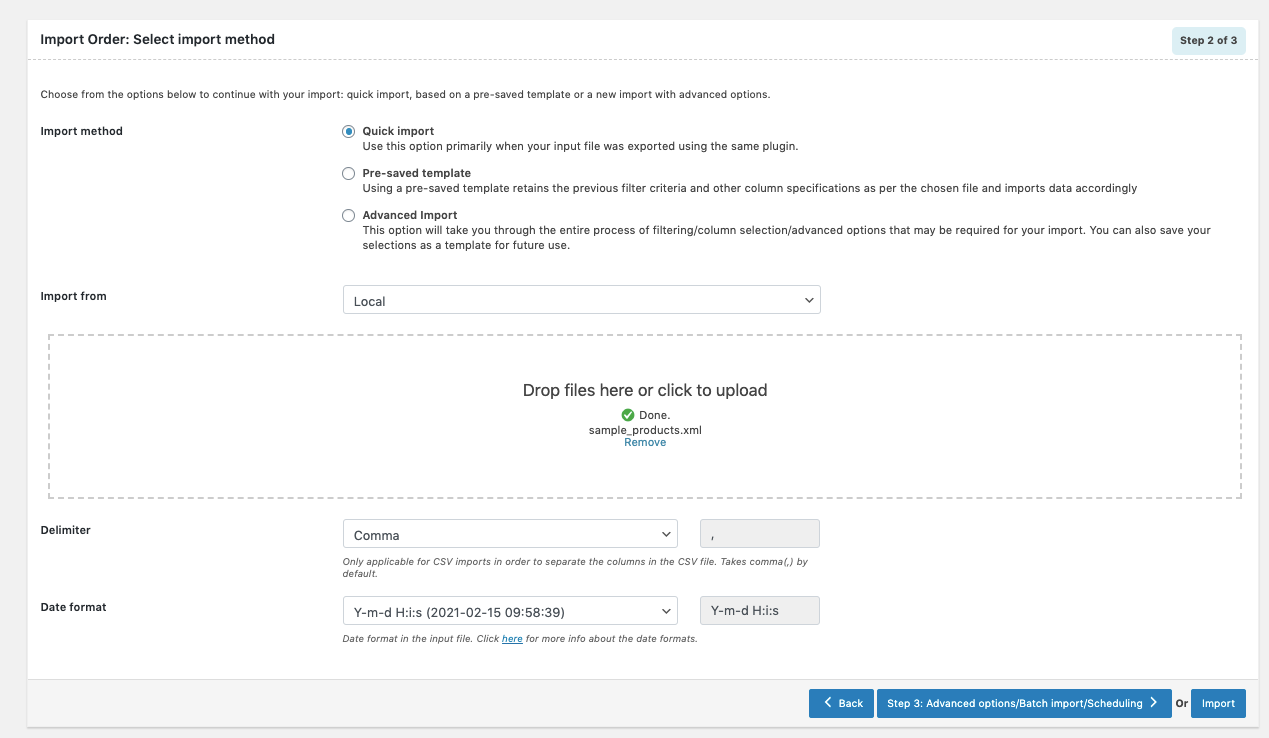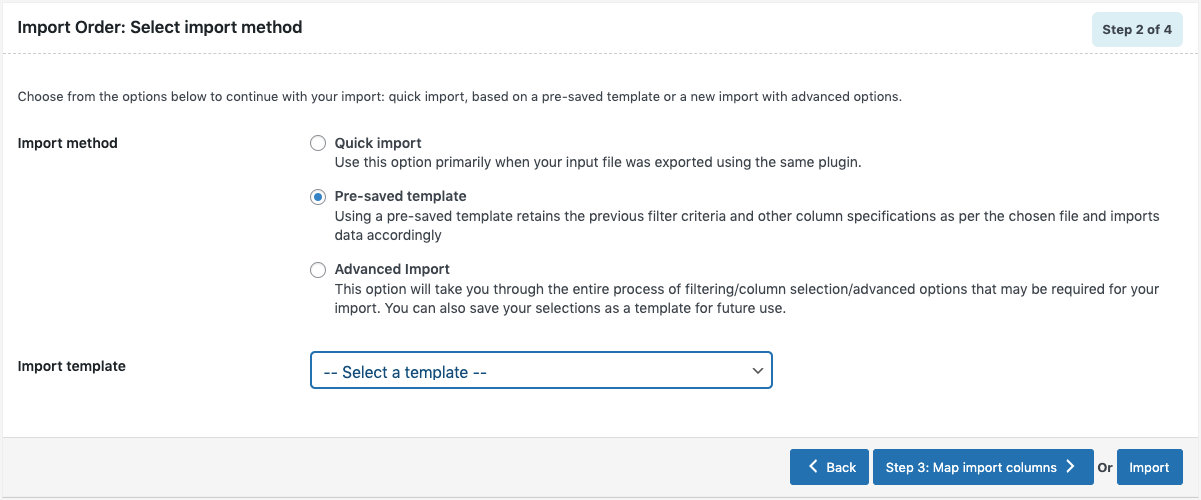It quite common for a busy online store to receive a large number of orders each day. Import Export Suite for WooCommerce plugin enables you to efficiently and quickly import and export all of these orders from one online store to another. To import WooCommerce orders:
- Select the post type as Order.
- Select an import method.
- Map the import columns.
- Use advanced options/ batch import and scheduling.
Import Orders
To import WooCommerce orders, click on WebToffee Import/Export(Pro) > Import.

Refer to the Sample Order CSV for more details.
Step 1: Select post type
As a first step, you need to choose the post type as Order.
Step 2: Select import method
Choose from the below options to continue with your import:
- Quick import
- Based on a pre-saved template
- Advanced import
Let us have a look at each of these export methods:
Quick Import
- imports the basic/standard fields of the respective post type.
- primarily used when your input file was exported using the same plugin.
- One can import file from:
- Local
- URL
- FTP
- Click the Import button to complete the action or proceed to Step3 for advanced options.
Pre-saved template
- This method retains the previous filter criteria and other column specifications as per the chosen file and imports data accordingly.
- By selecting this option, one can choose a previously saved template from the Import template drop-down.
- Click the Import button to complete the action or proceed to Step3 to map and reorder columns.
- Navigate to Step 3 to know more about mapping and reordering import columns.
Advanced import
- This import method takes you through a detailed process of filtering, column selection and advanced options.
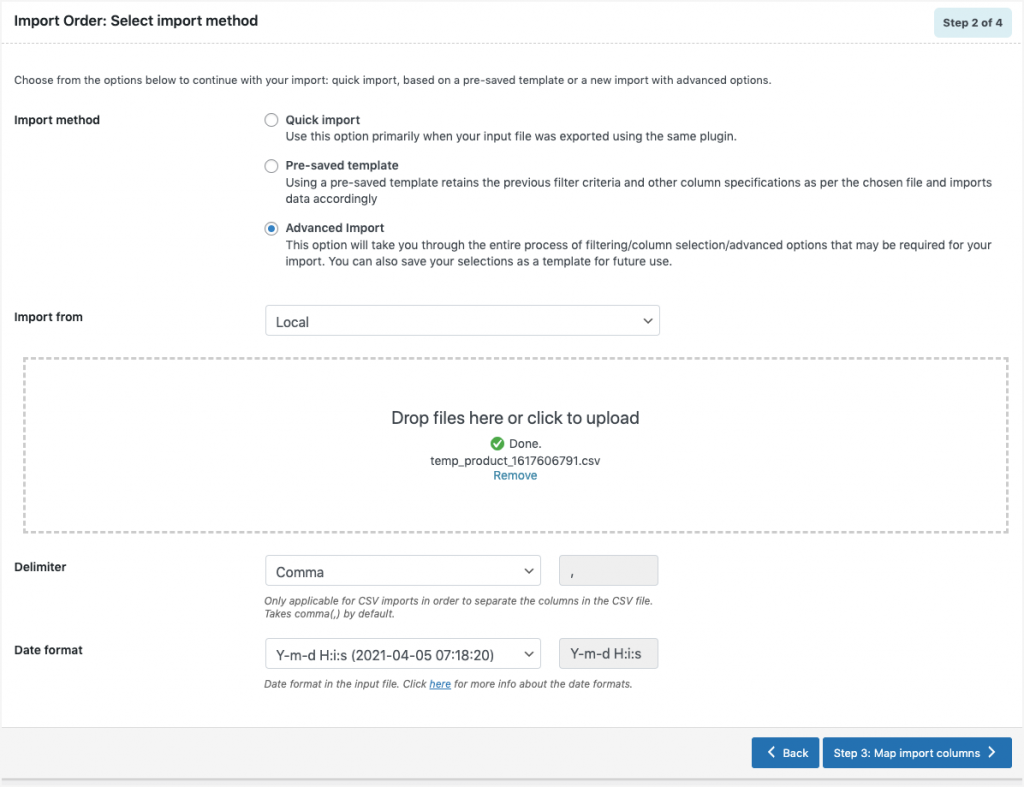
Step 3: Map import columns
Here, one can map the import columns under the following 3 fields:
- Default fields: The column names appearing in this section can be edited if required. The preferred names and choices that were last saved can be viewed on choosing a pre-saved template. One can also move the columns to reorder the arrangement.
- Meta(custom fields)
- Hidden meta
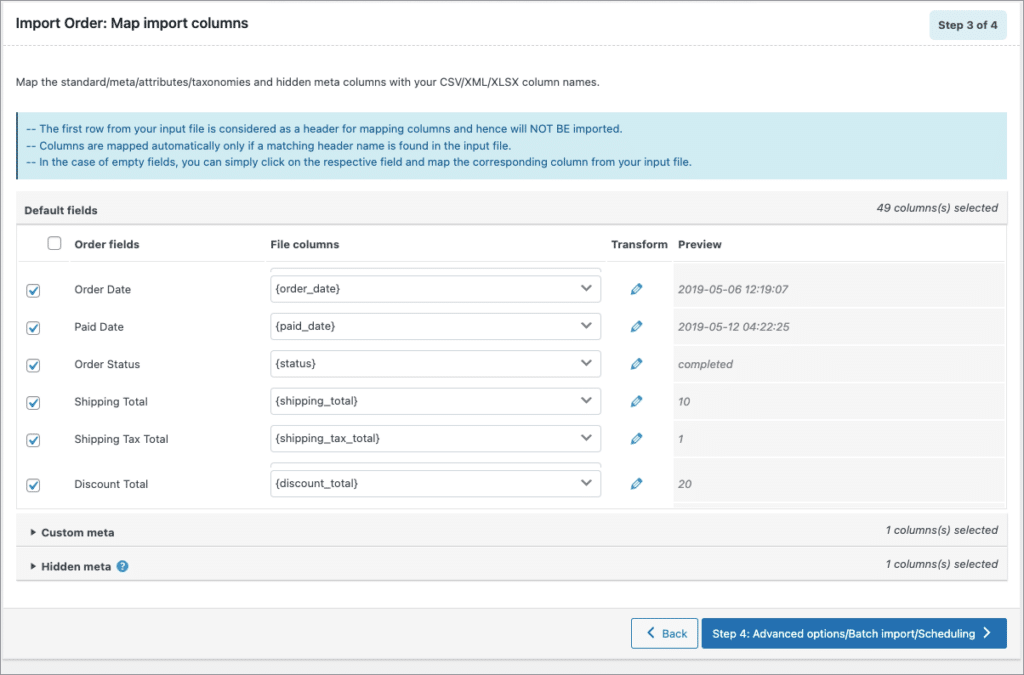
Evaluate field
Evaluate field can be used to append a value/expression to an existing item while importing. It basically selects/maps any column from the input file and compute the values with expressions and creates output.
- Expression: Any of the operators +*/-()&@ or string constants can be used along with the attributes to manipulate the respective value.
- Input: Select the column from the drop down which has to be modified.
- Output: Sample value will be created based on the first record from input file.
- Click on Step 4 to proceed.
Step 4: Advanced Options/Batch Import/Scheduling
- On reaching Step 4, the following window will appear, from where one can:
- Update Only: On selecting “Yes”, the store is updated with the data from the input file only for matching/existing records from the file. On selecting “No”, the entire data from the input file is processed for an update or insert as the case maybe.
- If order exists in the store: One can either Skip or Update the entry.
- If conflict with an existing Post ID: One can either Skip item or Import as new item.
- Email customer on order status change: You can choose between Yes and No.
- Create User: One can create a customer and notify them if needed.
- Link products using SKU instead of Product ID
- Delete non-matching orders from store
- Update stock details
- Save the template file for future (if needed).
- Click on Import/Schedule to finish.
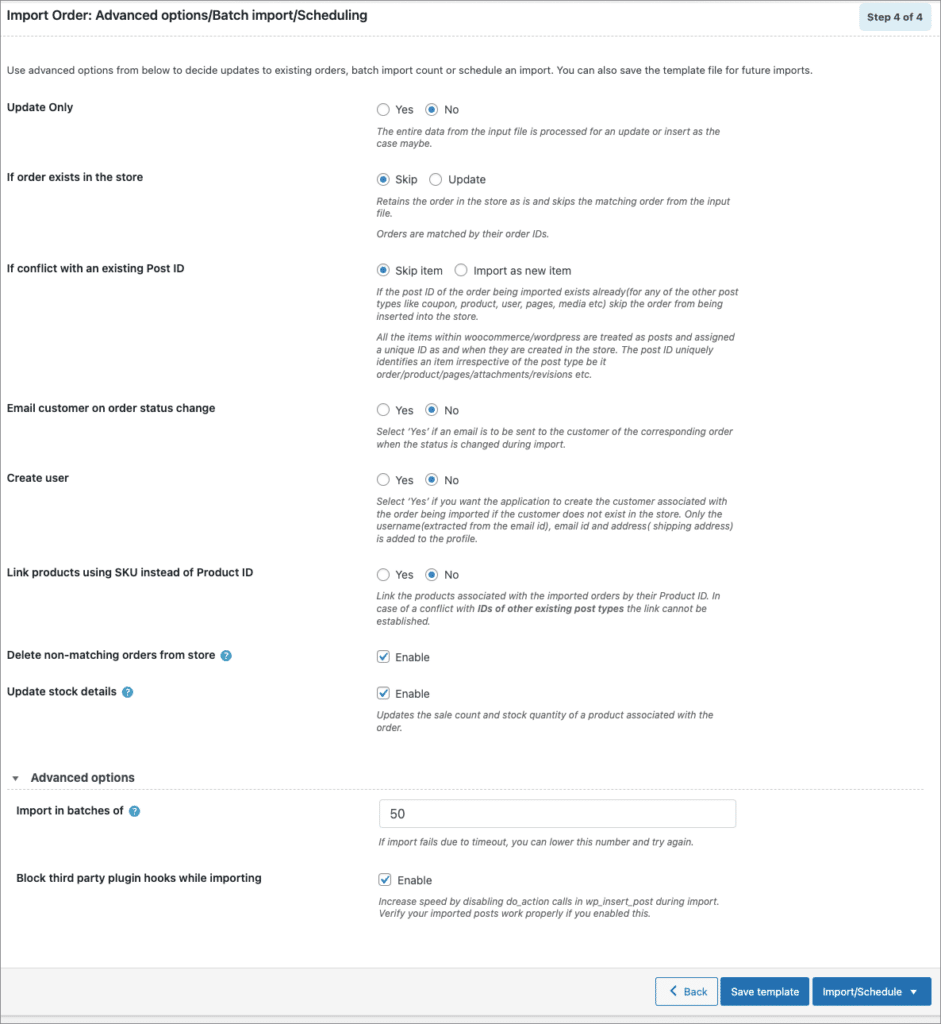
You can either import the orders directly into your store or schedule the import using FTP.
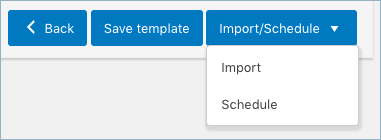
To schedule the import:
- Hit the Schedule option, and you will be taken to the cron schedule window as shown below:
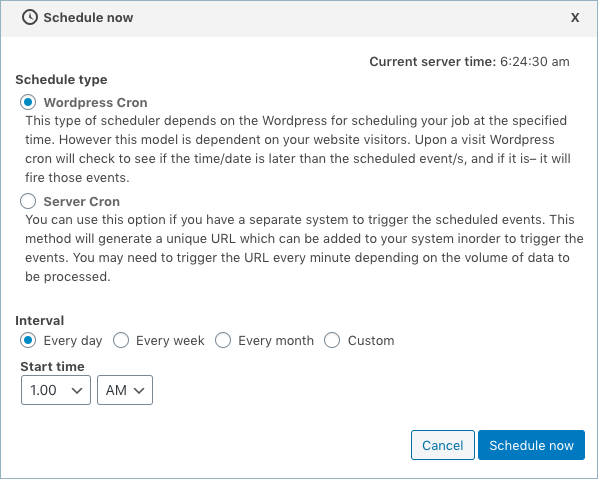
The plugin supports two different schedule types:
- WordPress Cron: Upon a visit, WordPress Cron will check to see if the time/date is later than the scheduled event/s, and if it is– it will fire those events.
- schedules your job at the specified time.
- is dependent on your website visitors.
- Server Cron: You may need to trigger the URL every minute depending on the volume of data to be processed.You can use this option :
- to generate a unique URL that can be added to your system in order to trigger the events.
- if you have a separate system to trigger the scheduled events.
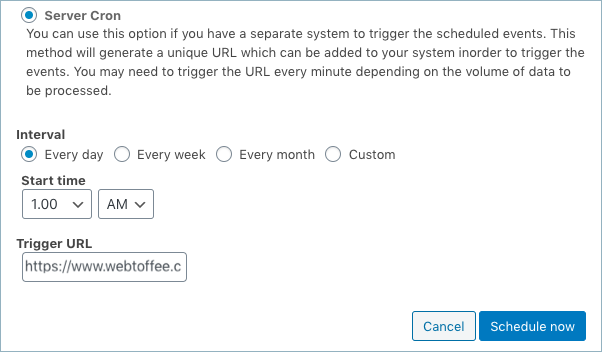
You can also configure the time at which the import is to be scheduled.
To directly import:
- Hit on the Import option.
Once the import is completed, a pop-up will be displayed showing import status which contains the number of successful imports and failed imports (if any).

